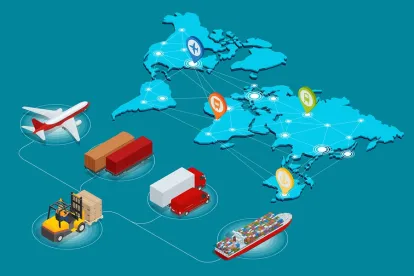As the pace of innovation increases at an ever faster rate, many products that traditionally may not have been thought of as involving computers or software are incorporating these elements. In 2007, the iPhone revolutionized the public’s conceptions about what a phone should be. Ever since, there has been a growing trend toward increasing connectivity and computing power in the products that we use on a day-to-day basis. Today, toasters connect to our wireless networks. Some automobiles now incorporate over 100 million lines of computer code into their onboard computer systems.
While innovation brings new opportunity, it also can bring new challenges for manufacturers. As more and more “smart” products incorporate computer and software elements, manufacturers must evaluate whether they have the appropriate supply chain practices and procedures in place to handle the addition of these elements. Among other things, this may include revising their contracting practices and documents. Many of the contract forms used to source raw materials or physical components may not be appropriate to use when sourcing software. The terms of any contract must be dictated by the specific circumstances. However, the following examples highlight some of the potential issues that may arise when trying to use traditional supply form documents to purchase software or other computer components to be included in a product.
Warranties
Warranties are the promises that a seller makes regarding goods or services provided to the buyer. In other words, they define the agreement between the parties as to what the goods/services are and what they can do. In many cases, the terms used to define the warranties for physical components may not be appropriate for use in connection with software. For example, a buyer’s expectations, and related warranties, for a bolt can be defined by reference to a set of engineering drawings. A custom software program designed to control the operation of a product cannot. Provisions defining the design of software often require an entirely separate statement of work, or other similar document, describing the parameters of the software program and what it must achieve. If such documents are not carefully crafted, the buyer may find that the product ultimately delivered falls short of the buyer’s expectations, without a contractual remedy.
Security
Cyber security is one of the greatest challenges facing the manufacturing industry (and pretty much every other industry) today. Many manufacturers, while cognizant of the need to safeguard their own computers and networks, traditionally have not thought of these threats as issues for product development. Until recently, the idea that a toaster or a refrigerator would need to be protected by a firewall or encryption would have been inconceivable. However, any device capable of connecting to the internet potentially is at risk. The standard contract terms used by many manufacturers may have warranties describing the physical characteristics and performance requirements of a product. However, most do not include provisions regarding the security levels that should be applied to products that incorporate a software component.
Compatibility
Which party is responsible for the compatibility and interaction of the various components that go into a product is an age-old problem in manufacturing. However, such issues take on a new dimension when software is added to the mix. It is not uncommon for a manufacturer to source software and hardware for a product independently. If the software and hardware combined do not function as expected, issues may arise as to which party bears responsibility. Depending on how the contracts are drafted, it may be the case that the buyer does not have recourse against the supplier of either the hardware or the software.
Intellectual Property
Contractual provisions regarding ownership of intellectual property always have been an important part of any supply chain contract. However, the importance of such provisions are magnified when dealing with software. Once created, unlike a physical component, a set of software (unless protected by security features) can be reproduced in infinite number without the need to expend any meaningful resources. Thus, the value resides almost entirely in the intellectual property rights that control use of the software. The appropriate division of ownership for that intellectual property will depend on the circumstances. If the program in question is of an “off the shelf” variety, it may be appropriate for the seller to retain full and unfettered rights in the program while the buyer receives only a limited license. If the program is being custom designed from the ground up at the direction of the buyer, it may be appropriate for the buyer to expect to retain full ownership rights. Between these two extremes, there are many variations and many ways that property rights (including rights to improvements and modifications) can be divided. Manufacturers must take care that their contracts properly address this issue.
The kinds of issues discussed here represent the proverbial “tip of the iceberg” for the myriad of issues that manufactures must face in dealing with the ever increasing pace of innovation. Manufacturers must take care to make sure that their practices and procedures are kept up to date and are appropriate to the situation.




 />i
/>i

